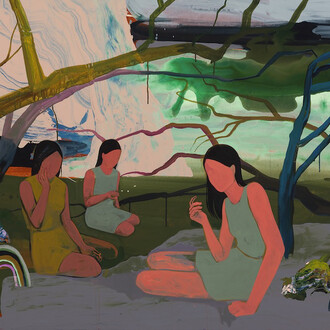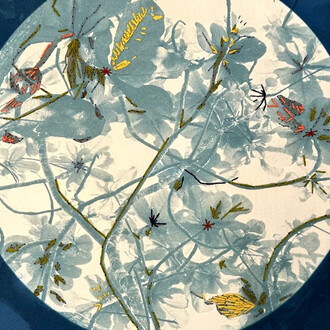“Everything is possible with Hungarian mustache wax”
“Pure creation of the mind”. The line, which entitles Dalí’s 1927 essay on the virtues of the photographic medium, leaves readers with no uncertainty about the self-publicising creative’s high regard for the format and its use as a vehicle for Surrealist artistry. It is no surprise then, that when Dalí met photographer Philippe Halsman in New York, 1941, he found a lifelong creative ally. In his book Halsman on the Creation of Photographic Ideas (1961), Halsman outlines how unusual and compelling photographic imagery can be produced by adhering to a very basic and accessible creative code. The primary elements of this code are the ‘rule of the unusual technique’, the ‘rule of the unusual added feature’ and the ‘rule of the missing feature’[1]. Whilst it is important to differentiate between that which is unusual (as described by Halsman in his text), and that which is Surreal, it nevertheless requires no great strain or overreaching of the mind to understand how Halsman’s desire to present his audiences with images of abstraction and impact matched well with Dalí’s Surrealist – and at times commercial – creativity.
In remarking upon his photographic exploits in L’Amic de les Arts, Dalí wrote that the medium grasps “the most subtle and uncontrollable poetry!”[2]. Ever able to deliver a pithy quote for a tenacious following that would hang onto every word, what we can observe here is that, in his explorations of photography with Halsman, Dalí saw a medium through which he could deliver his Surrealist creativity in a format that critics and general audiences alike had come to associate with ‘The truth’. To Dalí, this posed a welcome challenge to his artistry: the delivery of stark, hyper-real, fantastical visuals through a medium both blessed and stigmatised by obligations to fidelity and composition. To his critics, used by Dali as it was, the format – widely regarded as a medium for serving axiomatic authenticity to the masses – could retain only a diluted association with the unfettered, subconscious spontaneity of Surrealist expression.
Among the most prolific of their artistic engagements, Halsman and Dalí produced Pre-Natal Memory, a collage image depicting a foetal-formed Dalí ensconced within an enlarged, symbolic egg. The image, and its delineated Surrealist ties to Freudian notions of the ego and the id, served fittingly as the cover illustration for Dalí´s autobiography The Secret Life of Salvador Dalí. Even so, we can observe Halsman’s influence over the piece in a series of distinct elements. Perhaps the most explicitly available of these is the ‘unusual added feature’ of the symbolic egg, inside of which Dalí’s image is preserved, inevitably leading onlookers towards the aforementioned Freudian echoes that the work channels. What is quite clearly a missing feature here is clothing. When paired with the non-standard angle of the shot, pitched over the exposed Dalí, the nudity reinforces a sense of vulnerability and susceptibility which is readily associated with the ideographic natal tones coursing through the photograph. If it was simply Halsman’s intent to create an unusually striking image, then he achieved his goal and more. In collaboration with Dalí’s artistic input, the pair of creatives surpassed themselves, producing an iconic image, laden with Surrealist psychoanalytical ideography. Even today, we see this image permeating popular cultural nuances; its motifs lending an implicit undercurrent – and at times an explicit overtone – to the work of Avant-garde shock-value stylists; a list to which the dance-pop and electropop artist Lady Gaga can, most recently, ascribe her name.
Among the chief virtues of Dalí and Halsman´s photographic work is a differentiation between the process of taking a photograph and making a photograph. The successful Surrealist elements of their collaborations are the product of their making a photograph; where Halsman’s expertise in punchy, impactful photographic technique – well-founded within the world of advertisement and commercial photography – meets Dalí’s paroxysmal artistic direction. In regards to their friendship, just as with the photography displayed in Halsman’s Dalí’s Mustache, where Dalí’s critics saw a growing affiliation with the commercial world of advertising and product design, Halsman saw a mask; an ‘unusual added feature’ which successfully drew onlookers attentions away from the roots of his Surreal artistry.
Text by Alexander Everill
For further reading on the collaborative works of Salvador Dalí and Philippe Halsman, consult the Library of Congress online catalogue.
[1] Philippe Halsman, Halsman on the Creation of Photographic Ideas, Part 1. Rules, p. 19.
[2] Salvador Dalí, ‘Photography, pure creation of the mind’, in L’Amic de les Arts (Sitges),no.18, 30 September, 1927, p. 9.















